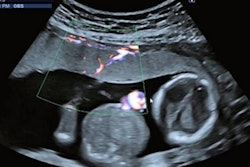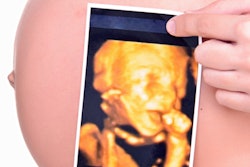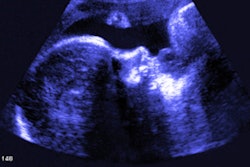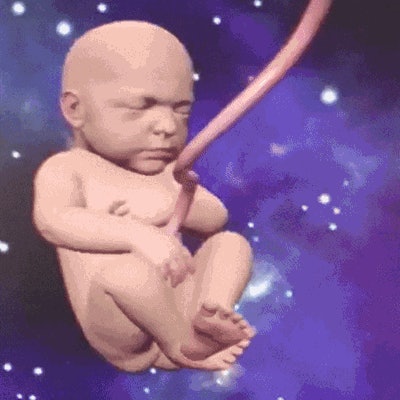
An innovative Finnish digital product studio has developed a product that enables parents to meet their own unborn children using 3D and 4D ultrasound. Samuli Cantell, creative director of Helsinki-based Adventure Club, which both creates its own digital products and collaborates on other alternative IT and virtual reality (VR) ventures, told AuntMinnieEurope.com how the idea of incorporating 4D ultrasound images into VR came to him when his partner was expecting their child in 2016.
Ultrasound was performed in August at the Aava medical center in Helsinki at a late stage in the pregnancy. The entire process, undertaken on GE Healthcare 4D ultrasound systems, took around an hour due to the baby's size. These DICOM files were then imported to OsiriX Lite and made into a 3D model that was then digitally sculpted into a fully fleshed-out virtual baby. After this, the model was placed in a VR environment using the game engine Unity, and by wearing special glasses, the parents could have a 4D encounter with the unborn child.
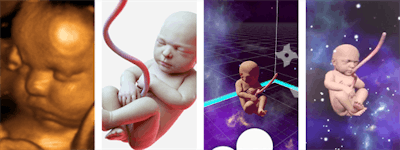 Ultrasound scans are converted digitally into a 3D life-like model of a baby. All images courtesy of Samuli Cantell.
Ultrasound scans are converted digitally into a 3D life-like model of a baby. All images courtesy of Samuli Cantell."I wanted to create something really personal with such an immersive technique," he said. "The VR experience is way more impressive than a 3D film, for example. It places you in a completely different reality where you can move around the baby which is 'floating' in a beautiful star-filled space."
Adventure Club is moving toward wider commercialization of this homegrown product, initially called VR baby, and is currently in talks with a hospital and an ultrasound manufacturer to see what opportunities can be found. Product development involved no financial outlay because Cantell did it with colleagues in around 10 days. People have asked him about the likely price of the package, but he said it's too early to say and he will probably know in the spring.
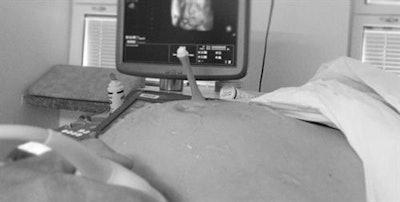 To develop the product, the 4D ultrasound scanning took place at a late stage of pregnancy and lasted around an hour.
To develop the product, the 4D ultrasound scanning took place at a late stage of pregnancy and lasted around an hour."I think this could be the future of ultrasound scanning for parents. For now, the product still needs a lot of professional 3D modeling hours as the scan is still a bit muddy," Cantell noted, who now plans to experiment with ultrasound scanning on different machines in an effort to improve quality and to contact imaging professionals to see if VR baby could help them in their work.
The virtual encounter made Cantell and his partner even more eager to meet their daughter in the flesh. While such an experience could be highly pleasurable at a personal level for future parents, this product might also facilitate deeper bonding, which doesn't always happen automatically, he added. Their daughter, Freja, was born on 7 September.
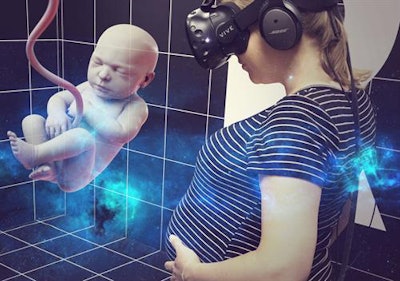 Parents, grandparents, and siblings wear special glasses to meet the soon-to-be new family member.
Parents, grandparents, and siblings wear special glasses to meet the soon-to-be new family member."When I put the VR glasses on for the first time, the experience took my breath away. Even though I knew this was only a 3D model, the fact that it was based on our unborn child really blew my mind," he said. "For the first 10 minutes, I was just sitting still on the floor watching her floating in the air next to me. It was very emotional and calming."





